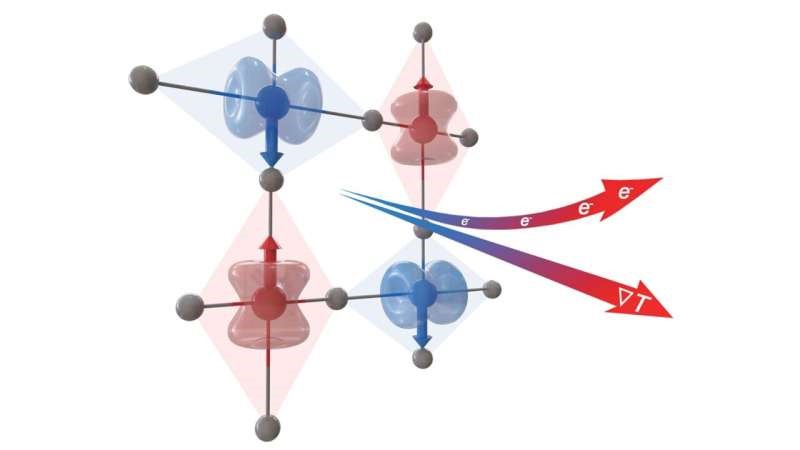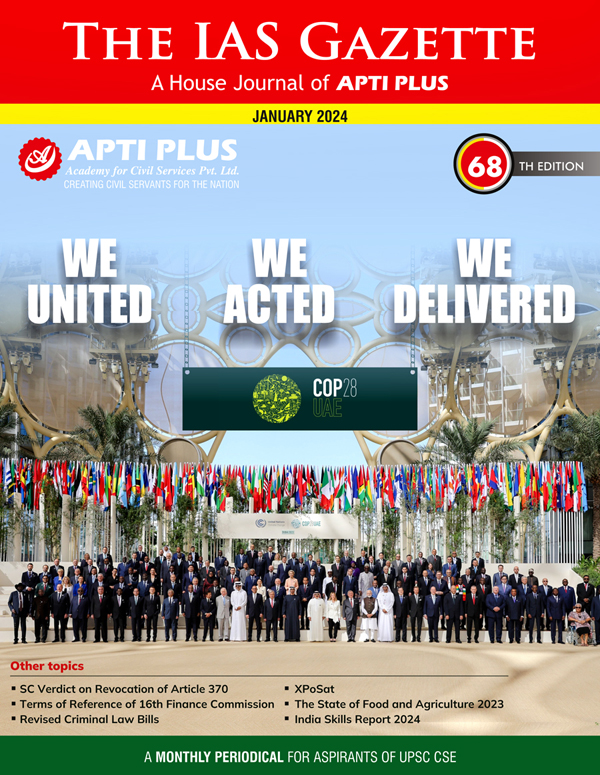Description

Disclaimer: Copyright infringement not intended.
Context
- The research, led by Prof. Wanxiang Feng and Prof. Yugui Yao from the Beijing Institute of Technology, aimed to explore the thermal properties of altermagnets.
Details
- Altermagnets represent a newly discovered class of magnetic materials exhibiting unique properties different from traditional ferromagnets and antiferromagnets.
- These materials possess a dual nature resembling both ferromagnets and antiferromagnets, making them intriguing for further study.
Emergence of Magnetism in Altermagnets
- Magnetic properties in materials arise from the arrangement and movement of electrons within the material.
- Altermagnets defy conventional norms by embodying a dual nature, combining collinear antiparallel magnetic order with non-relativistic spin splitting, resulting in zero net magnetization akin to antiferromagnets and ferromagnetic spin dynamics simultaneously.
Nernst and Hall Effects in Altermagnets
- The crystal Nernst effect (CNE) and crystal thermal Hall effect (CTHE) in altermagnets reveal the intricate connection between thermal and magnetic behaviors.
- These effects are influenced by the direction of the Néel vector, representing the direction in which neighboring magnetic moments align.
Significance for Spin Caloritronics
- Altermagnets hold promise for spin caloritronics, a field exploring the interplay between spin and heat flow.
- Their unique properties make them promising for achieving higher storage density and faster spin caloritronic devices, potentially leading to advancements in information processing and storage technologies.

Altermagnets
- Altermagnets are a class of materials that exhibit magnetic properties but are not traditional ferromagnetic substances.
- They include various compounds, alloys, and nanostructured materials engineered to possess magnetic characteristics.
Types of Altermagnets:
- Ferrimagnetic Materials: These materials exhibit a net magnetization even in the absence of an external magnetic field. Examples include spinel ferrites like magnetite (Fe3O4) and cobalt ferrite (CoFe2O4).
- Antiferromagnetic Materials: In antiferromagnets, adjacent magnetic moments align in an antiparallel manner, resulting in a zero net magnetization at macroscopic scales. Examples include manganese oxide (MnO) and chromium oxide (Cr2O3).
- Spin Glasses: These are disordered magnetic materials exhibiting a frozen magnetic state below a certain temperature. They are characterized by slow dynamics and aging phenomena.
- Rare-Earth Transition Metal Alloys: Alloys such as neodymium-iron-boron (NdFeB) and samarium-cobalt (SmCo) are well-known for their high magnetic strength and are widely used in various applications.
Properties of Altermagnets:
- Magnetic Strength: Altermagnets can exhibit a wide range of magnetic strengths depending on their composition and structure.
- Curie Temperature: This is the temperature above which a material loses its permanent magnetic properties.
- Magnetic Anisotropy: Some altermagnets exhibit preferential magnetization along certain crystallographic directions
- Coercivity: This refers to the resistance of a material to becoming demagnetized.
- Magnetic Hysteresis: Altermagnets often display hysteresis loops in their magnetization curves, indicating energy losses during magnetization cycles.
Synthesis Methods:
- Physical Vapor Deposition (PVD): Techniques like sputtering and evaporation are used to deposit thin films of altermagnets onto substrates.
- Chemical Vapor Deposition (CVD): Altermagnets can be synthesized through chemical reactions in vapor phase, allowing for precise control over composition and morphology.
- Sol-Gel Processing: This involves the synthesis of altermagnets from metal alkoxides or metal salts dissolved in a solvent, followed by gel formation and solidification.
- Mechanical Alloying: Powder metallurgy techniques can be employed to synthesize altermagnets by milling and mixing elemental powders followed by compaction and sintering.
Applications of Altermagnets:
- Permanent Magnets: Altermagnets such as NdFeB and SmCo find extensive use in electric motors, generators, and magnetic resonance imaging (MRI) machines.
- Data Storage: Spintronics and magnetic recording technologies utilize altermagnets for non-volatile memory devices and hard disk drives.
- Sensors: Magnetoresistive sensors based on altermagnets are employed in automotive, aerospace, and biomedical applications for position sensing and navigation.
- Energy Conversion: Altermagnets are investigated for use in energy harvesting devices, magnetic refrigeration, and magnetic-based power generation systems.

Conclusion
Altermagnets represent a diverse class of materials with promising properties and applications across various fields of science and technology. Continued research into their synthesis methods, fundamental properties, and novel applications is essential for unlocking their full potential and addressing societal challenges in energy, information technology, and healthcare.
|
PRACTICE QUESTION
Q. Which of the following statements about altermagnets is correct?
1. Altermagnets exhibit only ferromagnetic properties.
2. Altermagnets are a newly discovered class of magnetic materials exhibiting properties different from traditional ferromagnets.
3. Altermagnets display properties observed solely in antiferromagnetic materials.
4. Altermagnets possess a unique blend of magnetic characteristics, resembling both ferromagnets and antiferromagnets.
Options:
A) 1 and 2
B) 2 and 3
C) 3 and 4
D) 1 and 4
Correct Answer: D)
|
















